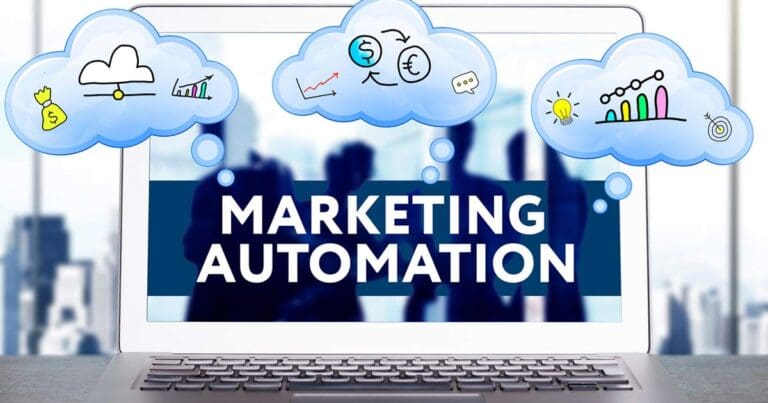9 Digital Transformation Trends Enhancing Education

Digital transformation is rapidly transforming education and creating new opportunities for students to learn.
The introduction of innovative technologies and trends, such as cloud computing and artificial intelligence, are revolutionizing the way educators teach, giving them new opportunities for greater collaboration, productivity, and insight into student learning.
By leveraging digital transformation in education, educational institutions and educators can stay ahead of the curve and provide students with a more dynamic and engaging learning experience.
What is digital transformation in education?
Digital transformation in education is the use of digital technologies to improve educational processes and make them more efficient. This can include modernizing existing teaching methods or introducing new ways of teaching that make use of technology to facilitate learning.
As educational institutions adopt digital transformation, they need to ensure that the technology being used is user-friendly and compliant with existing privacy regulations.
10 digital transformation trends in education
There are several advancements in technology that are helping to advance the education industry that include online learning platforms, AI-based teaching assistants, flipped classrooms, and personalized learning paths.
- Online Learning Platforms
- Virtual and Augmented Reality
- AI-Based Teaching Assistants
- Learning Management Systems (LMS)
- Flipped Classrooms
- Learning Analytics
- Cloud Computing
- Personalized Learning Paths
- Big Data
1. Online Learning Platforms
These platforms are designed to provide an interactive and engaging learning experience.
They can include virtual classrooms, online lectures, online assignments, video tutorials, simulations, and interactive tools such as forums and chat rooms.
2. Virtual and Augmented Reality
Virtual and Augmented Reality (VR/AR) technologies offer a new way of teaching by immersing students in a realistic digital environment.
Students can interact with 3D objects and explore their environment from the comfort of their own homes.
VR/AR can be used to simulate real-world situations and help students gain a deeper understanding of various topics.
3. AI-Based Teaching Assistants
AI-based teaching assistants use artificial intelligence to provide personalized feedback and guidance to students throughout their learning journey.
They can also assist educators with grading, tracking student progress, and providing personalized learning paths.
4. Learning Management Systems (LMS)
Learning Management Systems are online platforms that allow educators to track student progress and engagement digitally.
They can also be used to organize and deliver course content, provide feedback, facilitate collaboration between students and instructors, and assign tasks.
5. Flipped Classrooms
Flipped classrooms are a way of teaching where students study course material outside of the classroom before they enter the classroom.
This allows teachers to focus on more personalized instruction, as well as activities that require deeper engagement with the material. Gamification
6. Learning Analytics
Learning analytics are data-driven insights that help teachers and students understand the effectiveness of educational programs.
They can provide valuable insights into student engagement, performance, behavior, and other factors to optimize the learning experience for everyone.
7. Cloud Computing
Cloud computing allows educational institutions to store and access data securely on the cloud.
This makes it easier to share resources across multiple devices and provide students with up-to-date information.
8. Personalized Learning Paths
Personalized learning paths are tailored, individualized pathways that are designed to meet a student’s unique needs and abilities.
This helps ensure that students are able to progress at their own pace and gain the most out of their educational experience.
9. Big Data
Big data is a large collection of data that can be used to generate insights about student performance, course content, and teacher effectiveness.
Big data analytics can provide educators with valuable insights that help inform decisions and improve the learning experience.
Benefits of digital transformation in education
- Increased engagement and collaboration between students and teachers
- Access to more resources and better-quality educational materials
- Increased efficiency due to automated processes
- More personalized learning paths tailored to each student’s needs
- The ability to track student progress and performance
- Improved security for data storage
- Increased access to educational opportunities for remote students
- Cost savings due to the use of cloud computing
Digital transformation in education
Digital transformation in education is an ongoing process that can provide tangible benefits for both educators and students alike.
By leveraging various technologies such as AI, VR/AR, LMSs, flipped classrooms, gamification, learning analytics, cloud computing, and personalized learning paths, educational institutions can create a more engaging and personalized learning experience.
Additionally, the use of big data can help teachers and administrators make better decisions that will benefit their students in the long run.
Overall, digital transformation in education is an important step toward the future of learning.
Looking To Gain Clarity On Your Digital Transformation Needs?
Download Your Tactical Guide to Digital Transformation now and learn everything you need to know in 10 minutes or less!
More articles about hiring and industry trends:
- Technology Ethics: Implications of Using Evolving Technologies
- Big Tech Job Cuts Don’t Mean Demand for Tech Professionals Is Over
- Challenges Faced by the Banking Industry in the Digital Age
- The World of Robotics: Industries Leveraging Robotics Engineers
- How to Use Digital Transformation to Stay Ahead in the Manufacturing Industry
- Salesforce Admin Jobs to Hire to Get the Most Out of Your Investment
- Benefits of Digital Transformation in Healthcare with Examples
- HR Technology in Hiring: Streamlining Your Recruitment & Onboarding
- 4 Simple Resume Tips to Help You Hire Job Candidates Faster



